
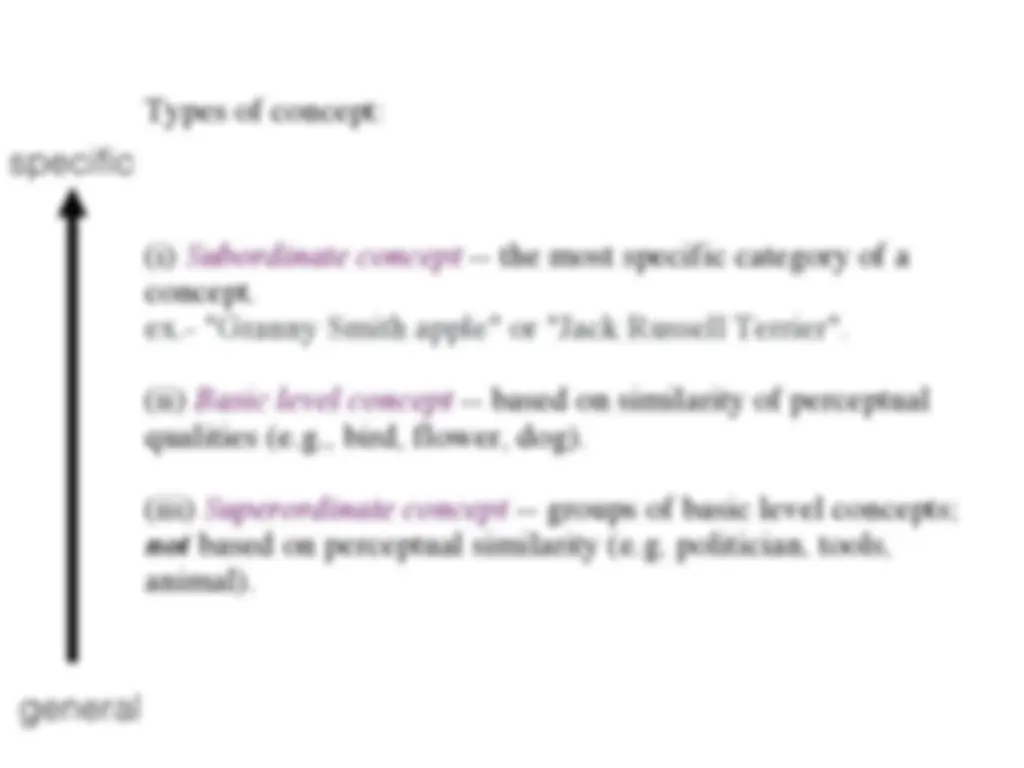
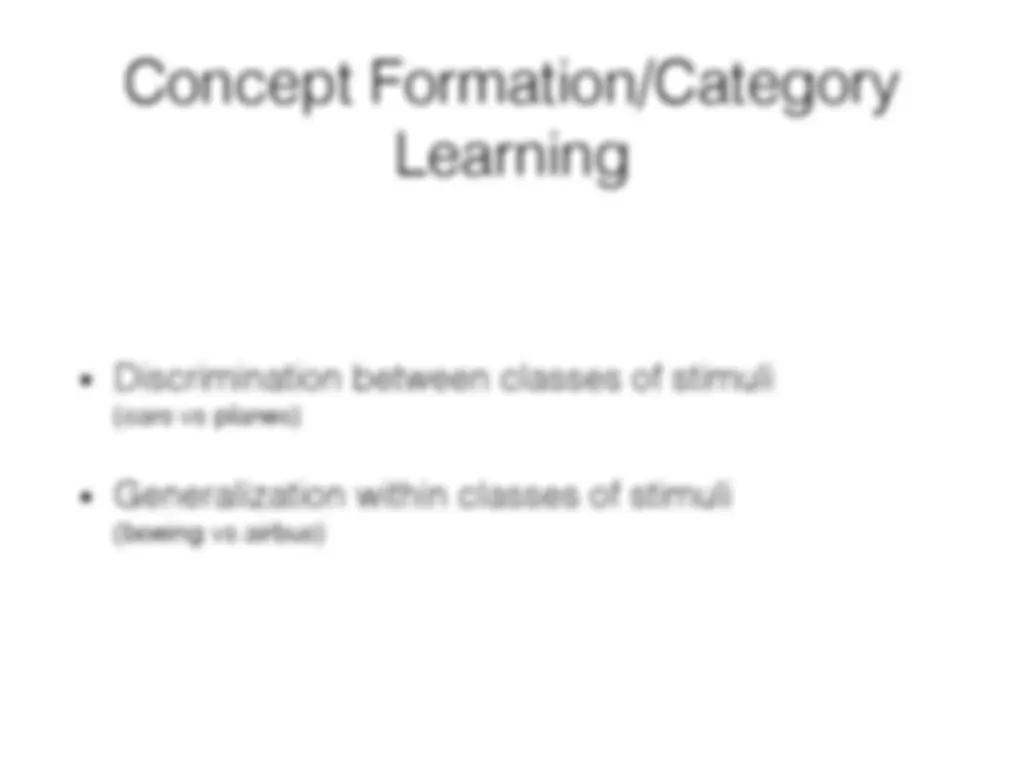
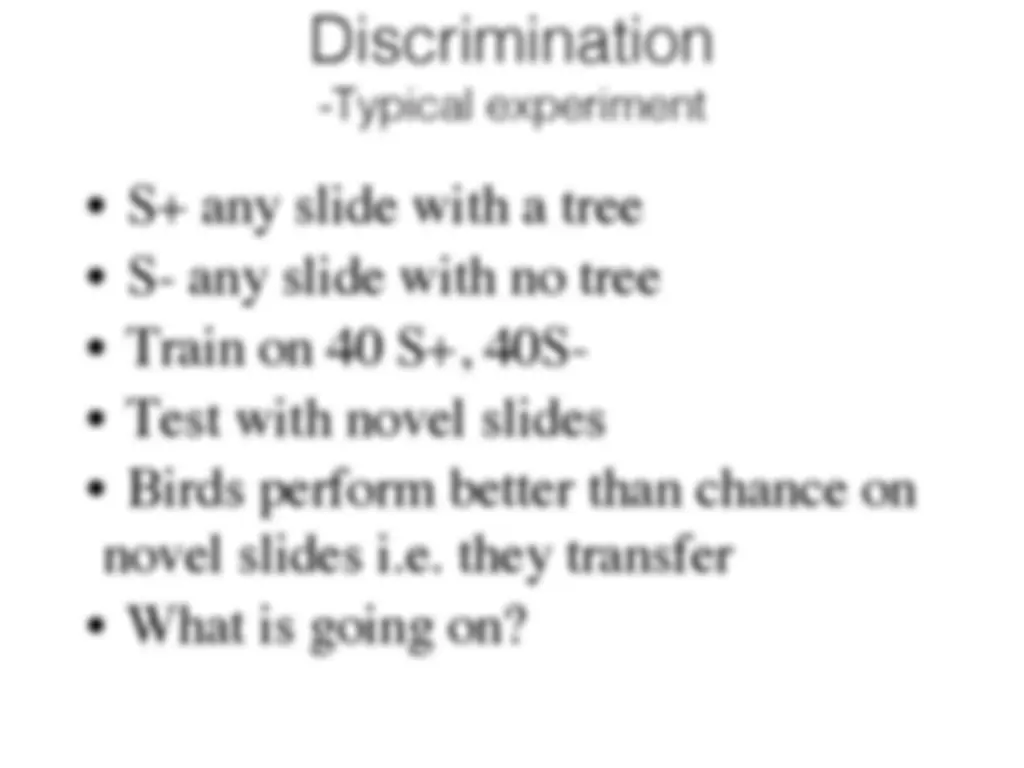
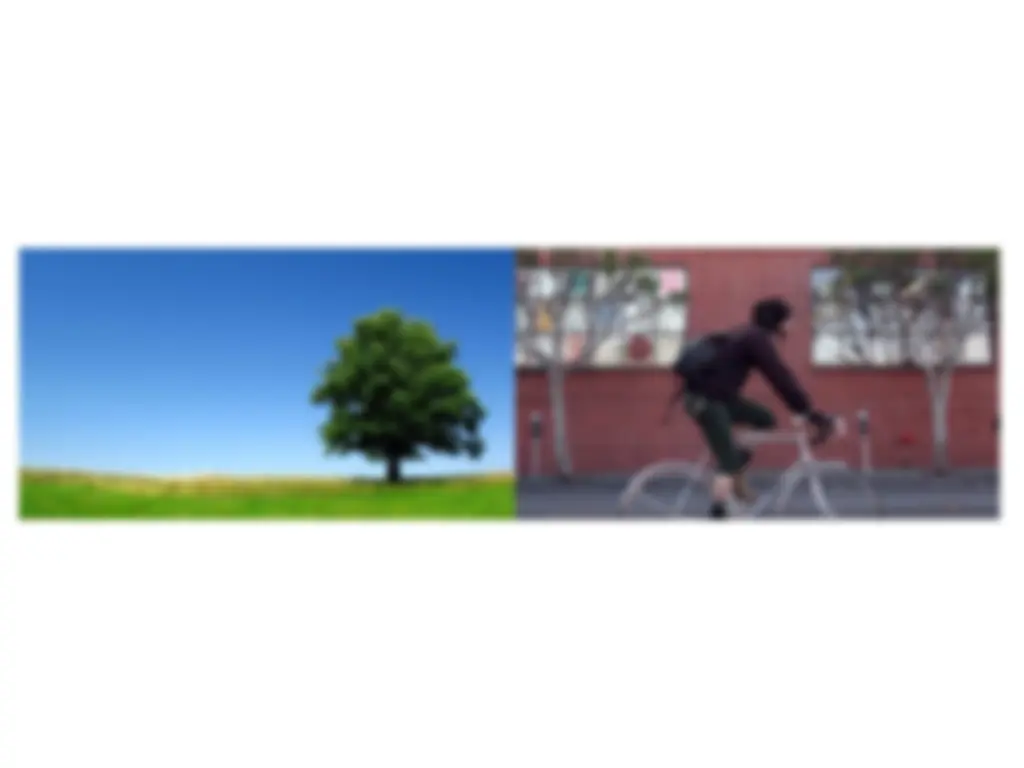
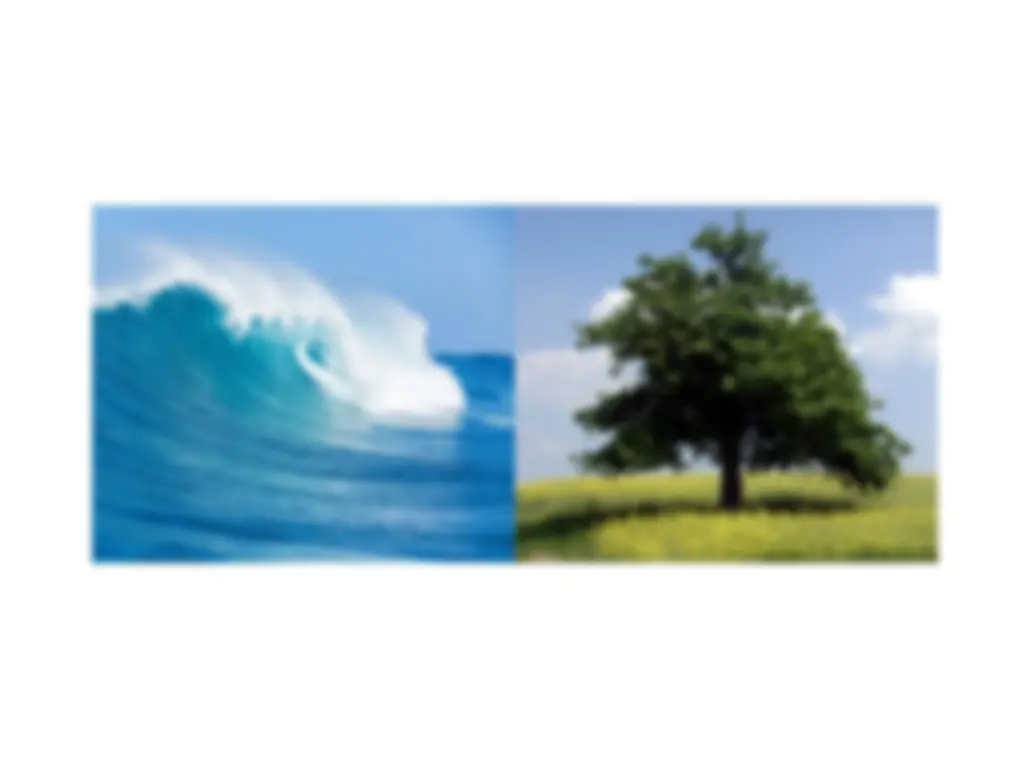
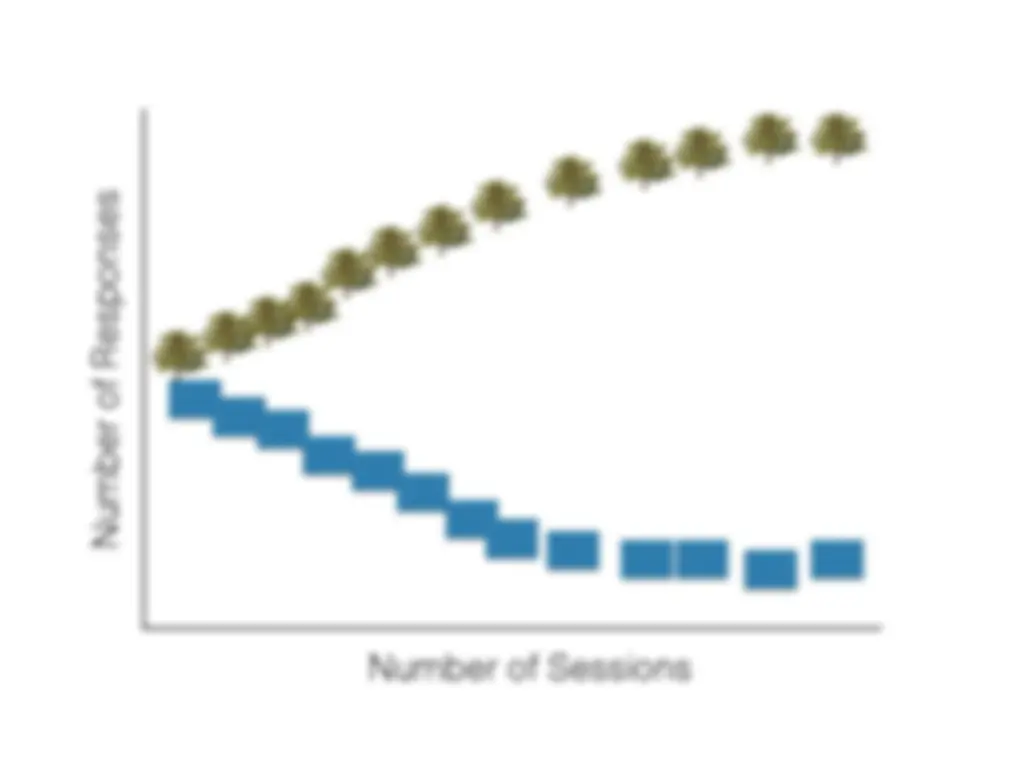
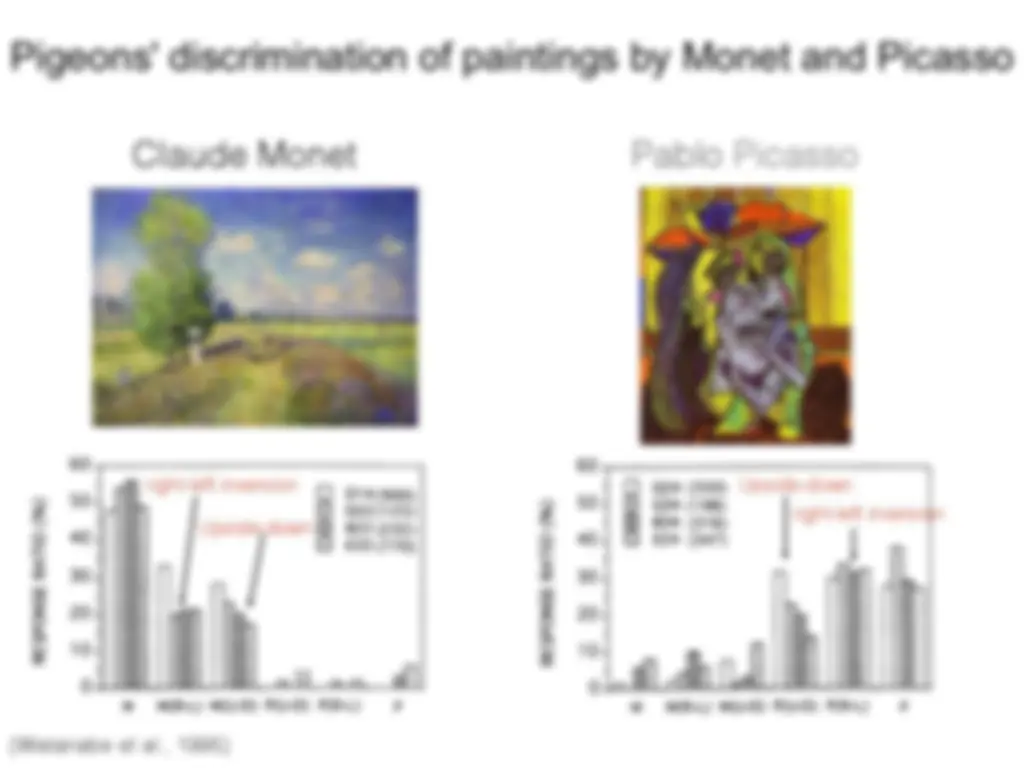
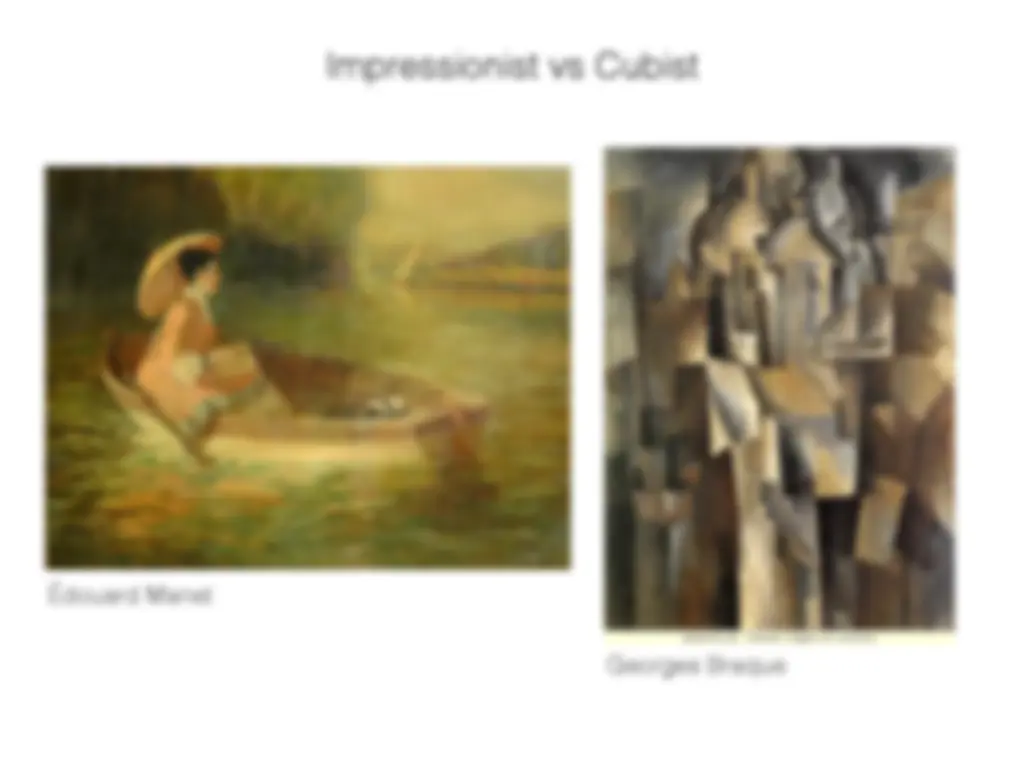
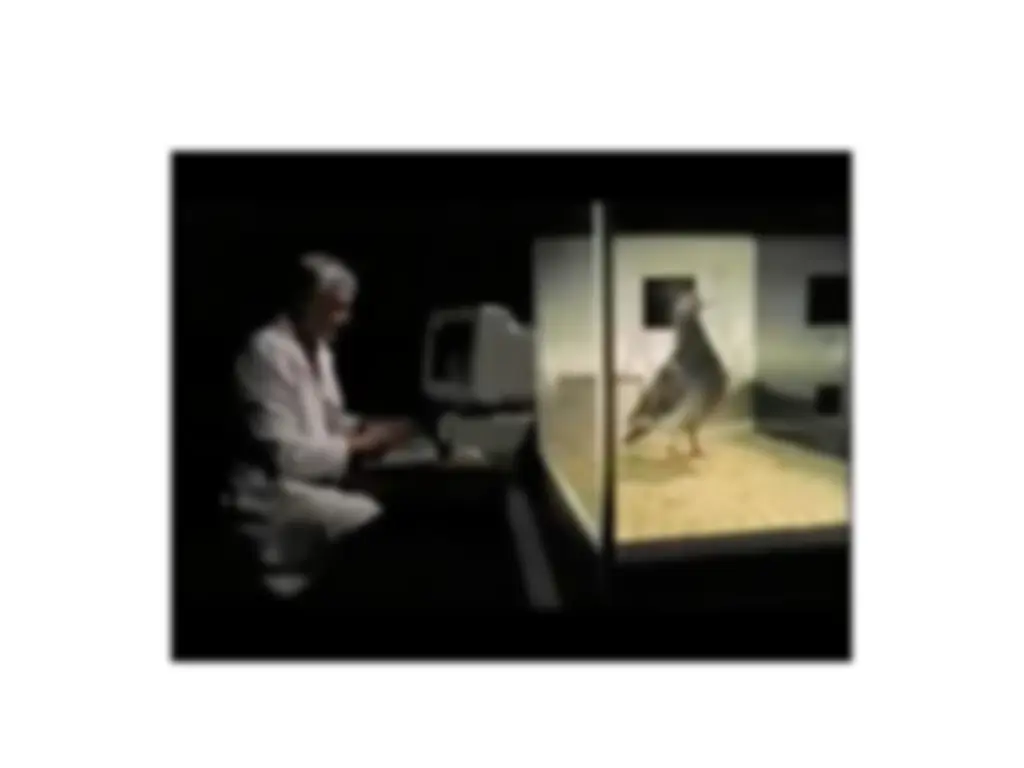
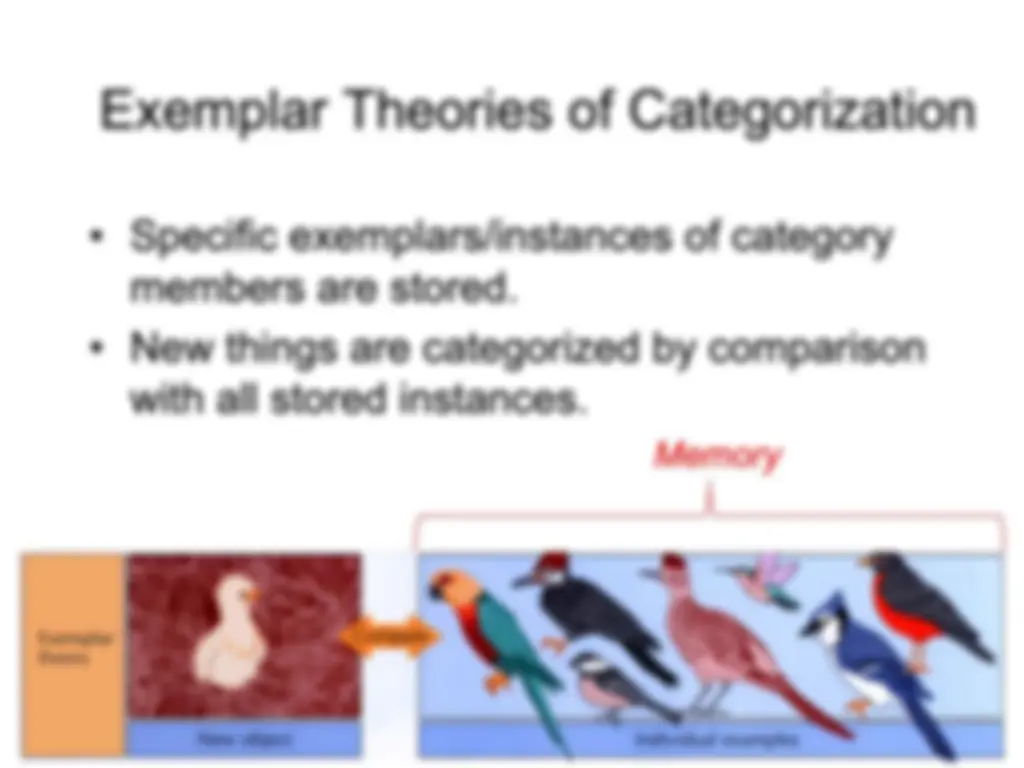
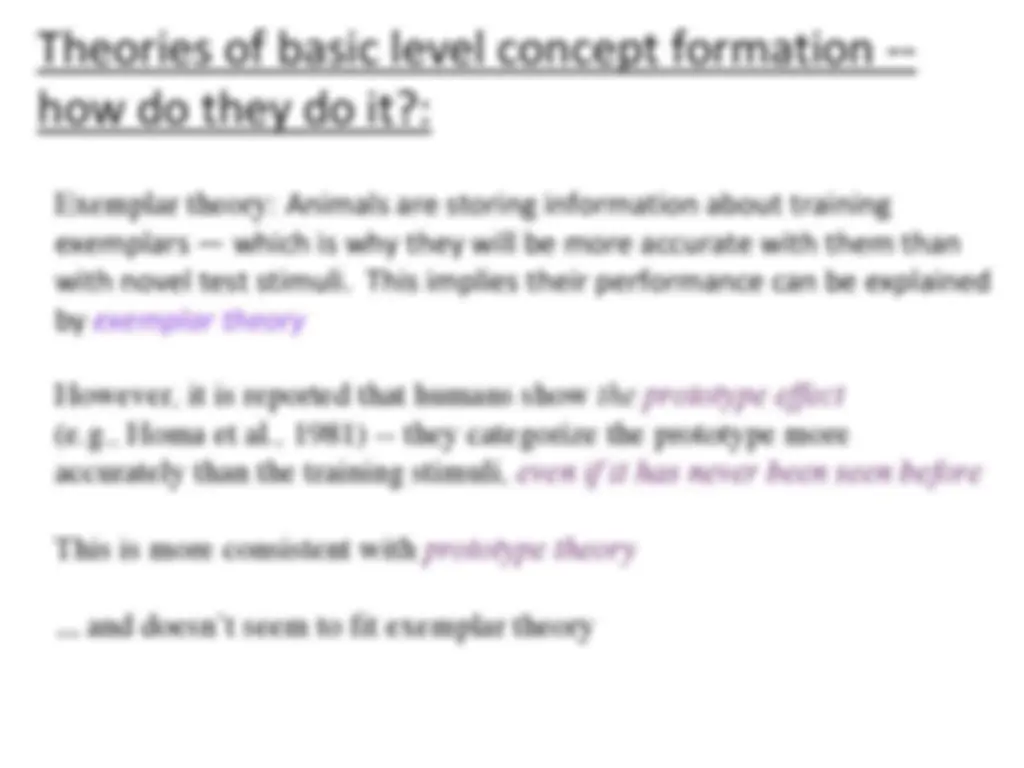
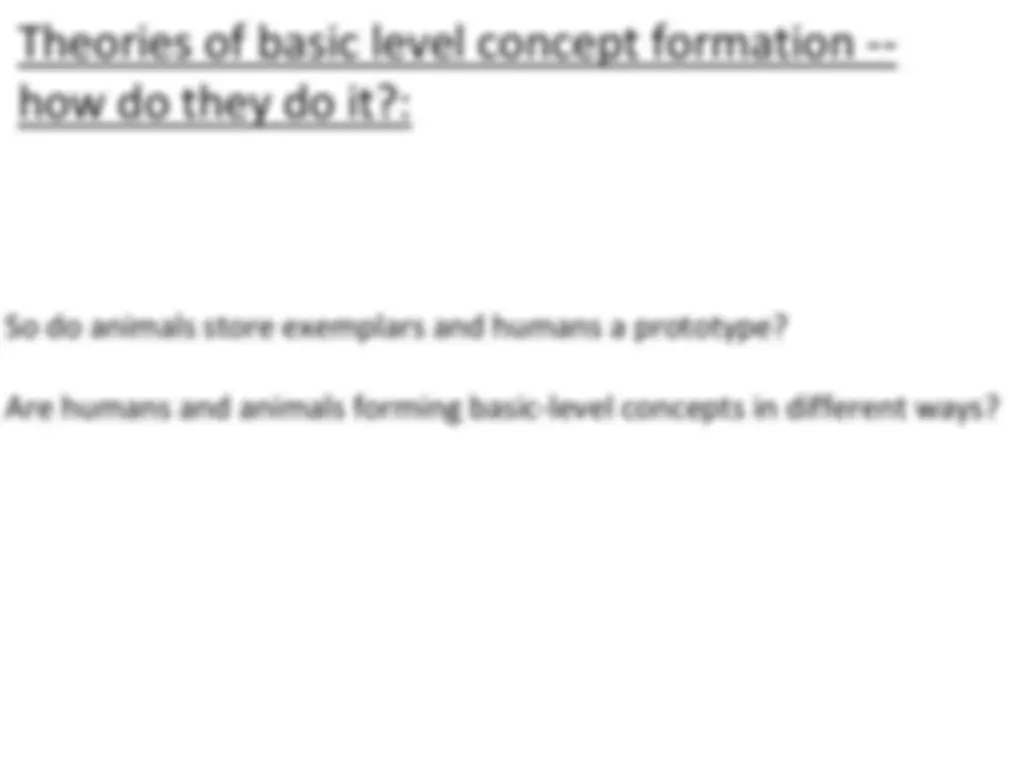
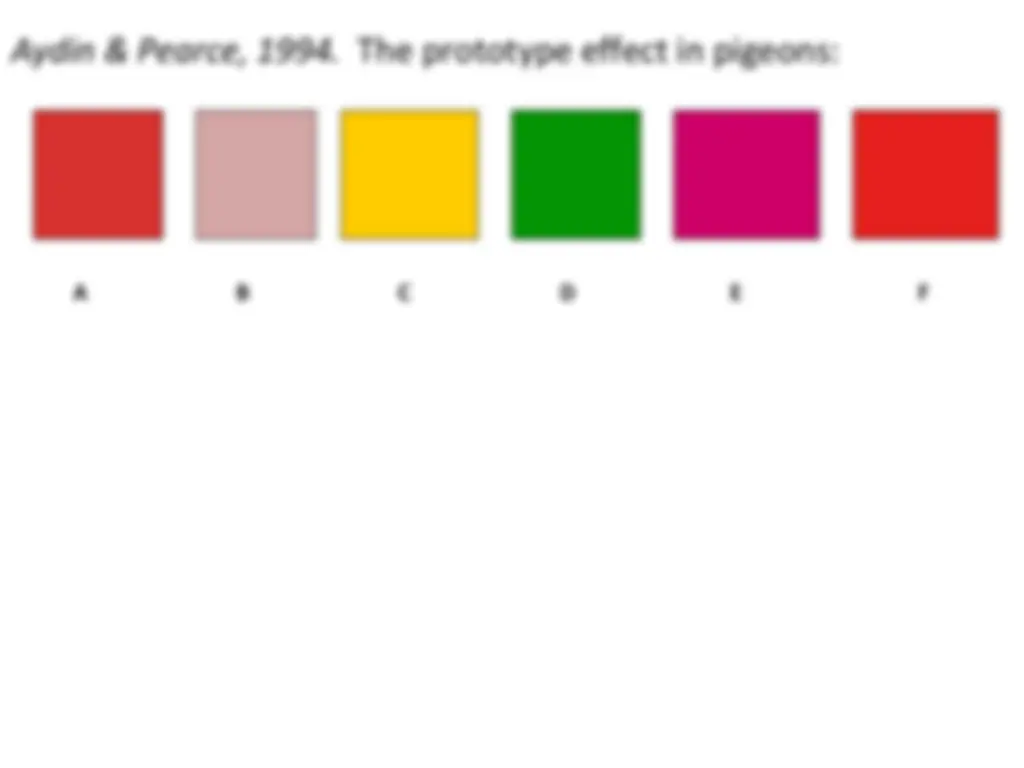
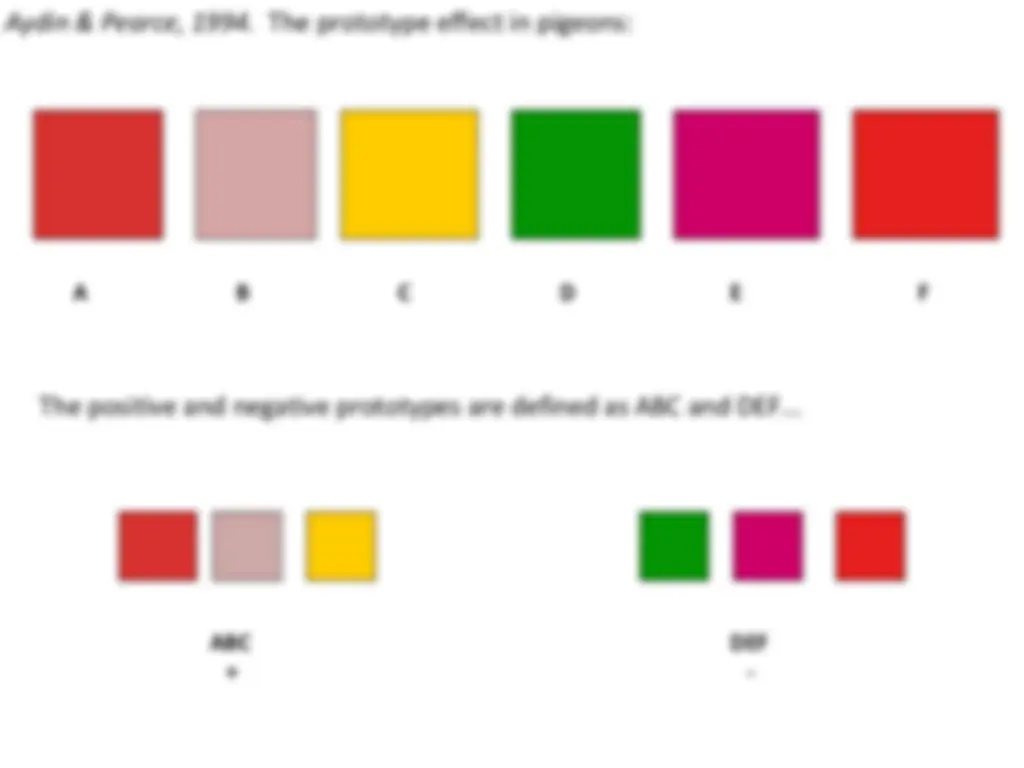
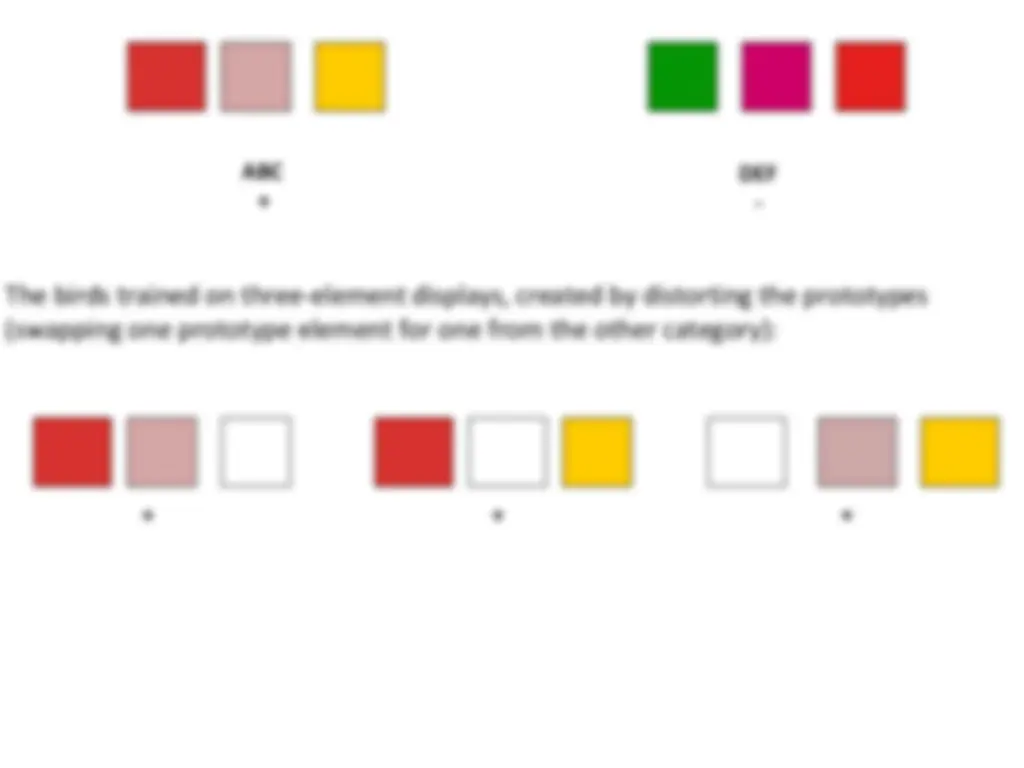
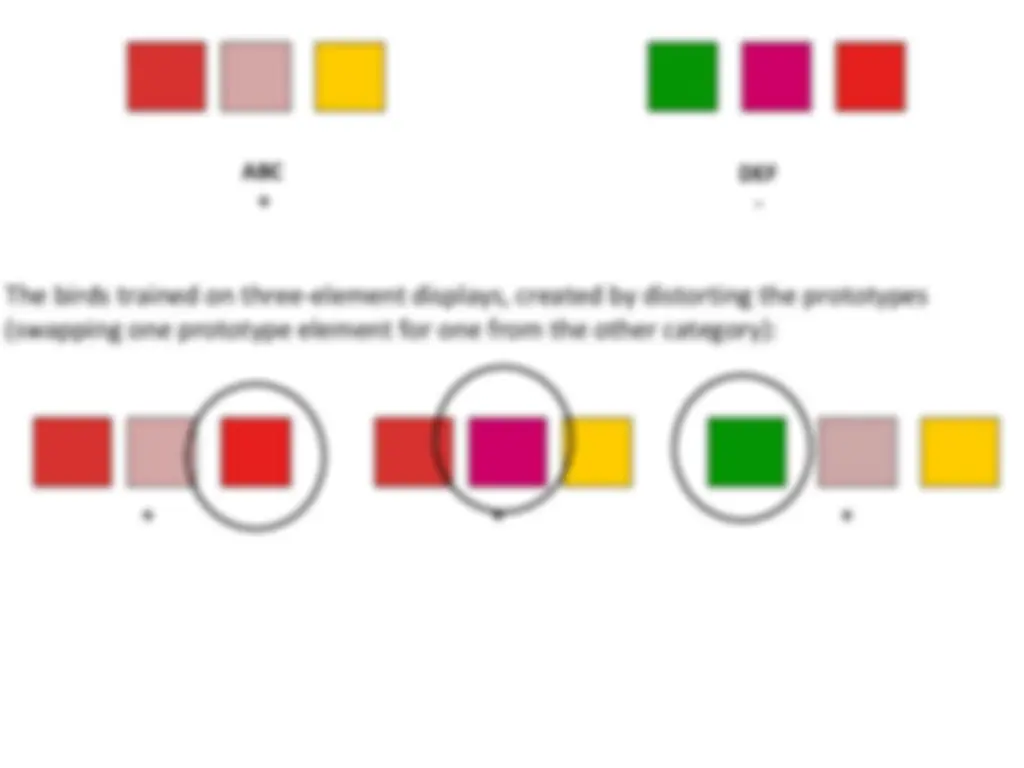
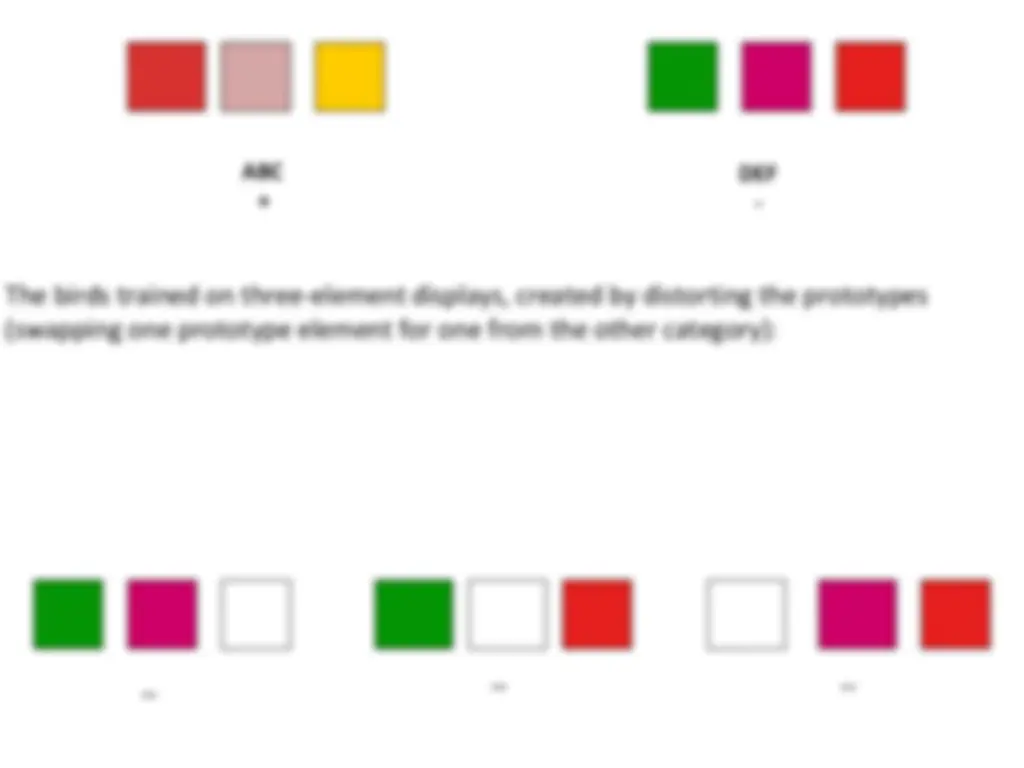
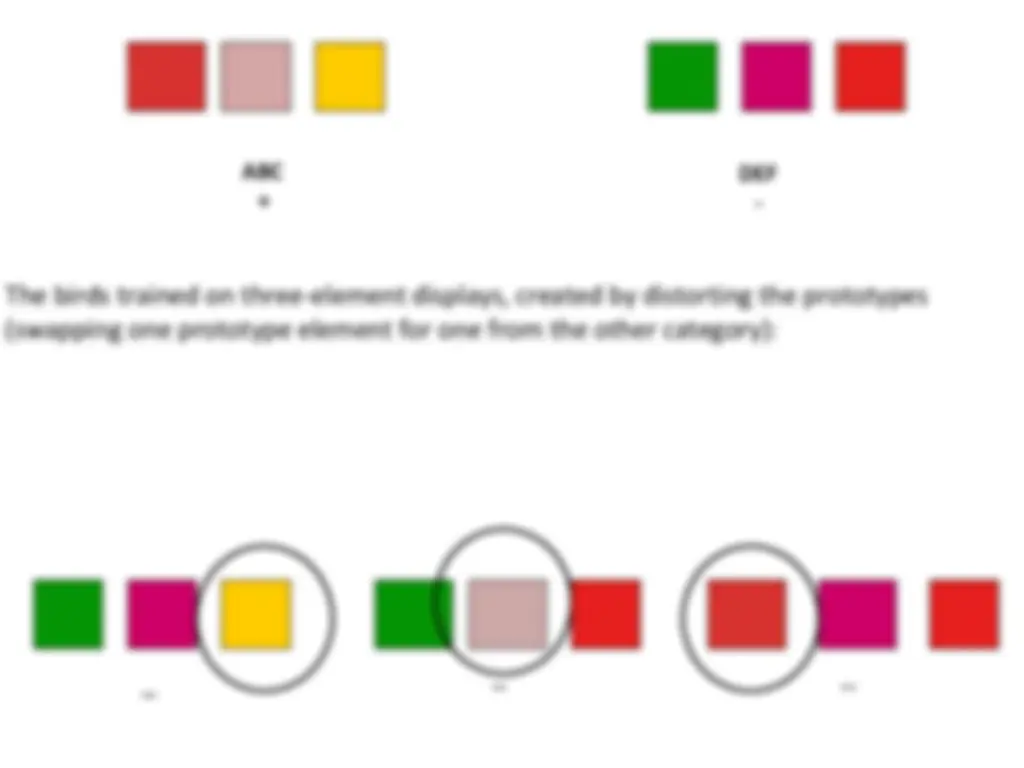
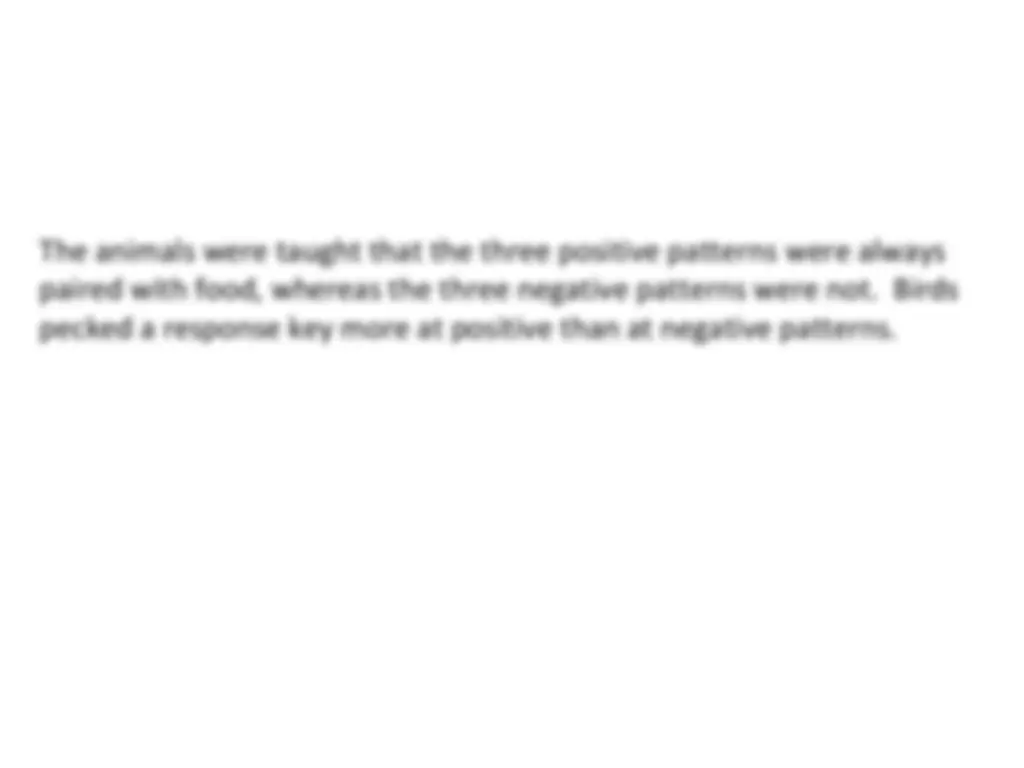
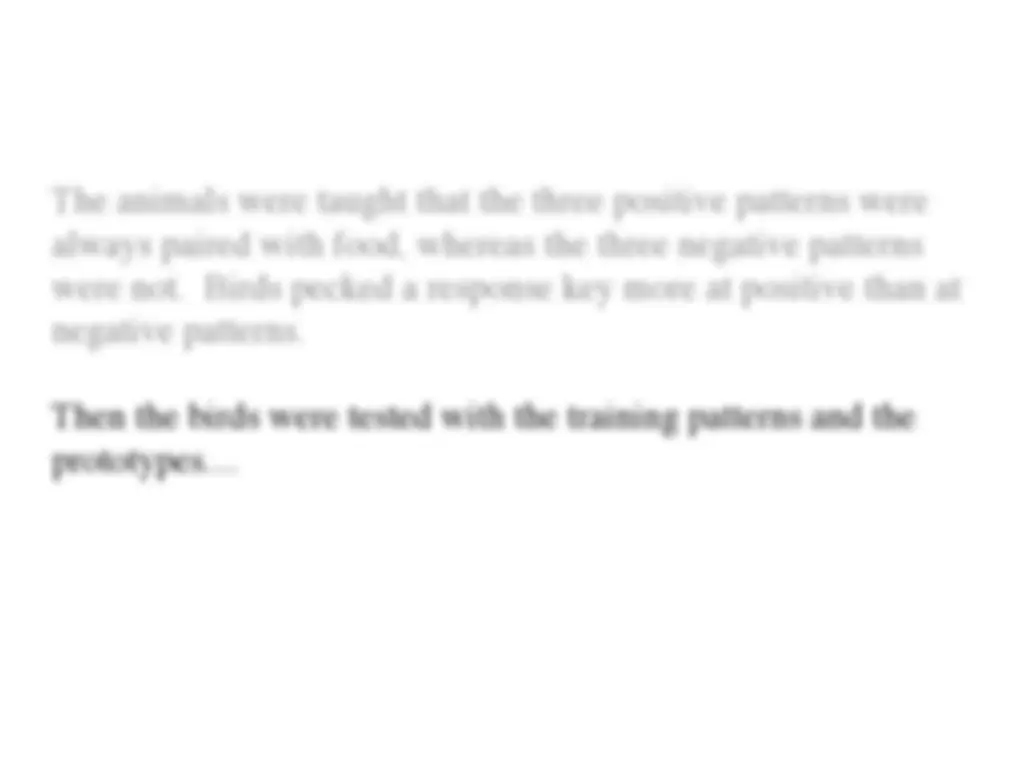
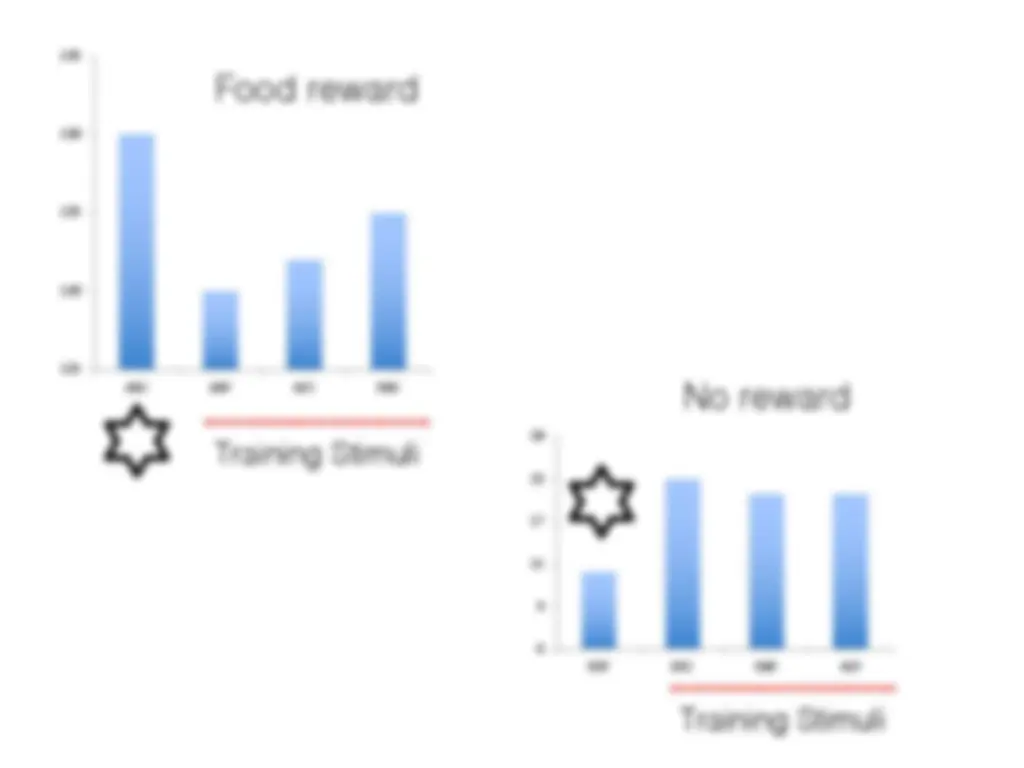
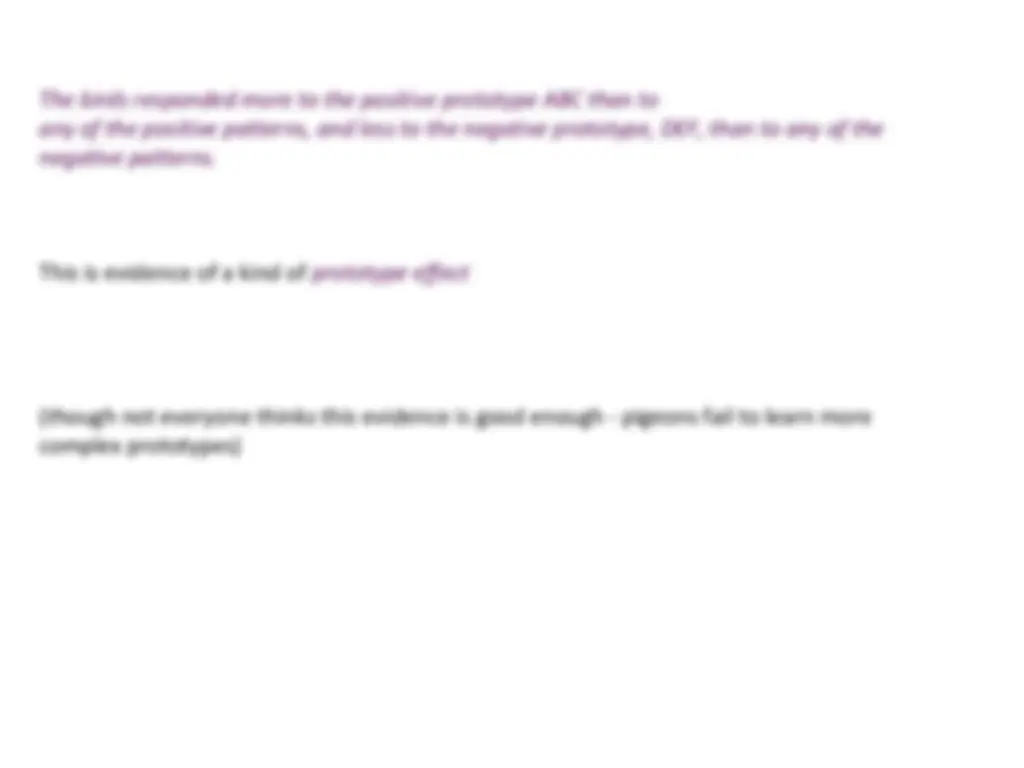
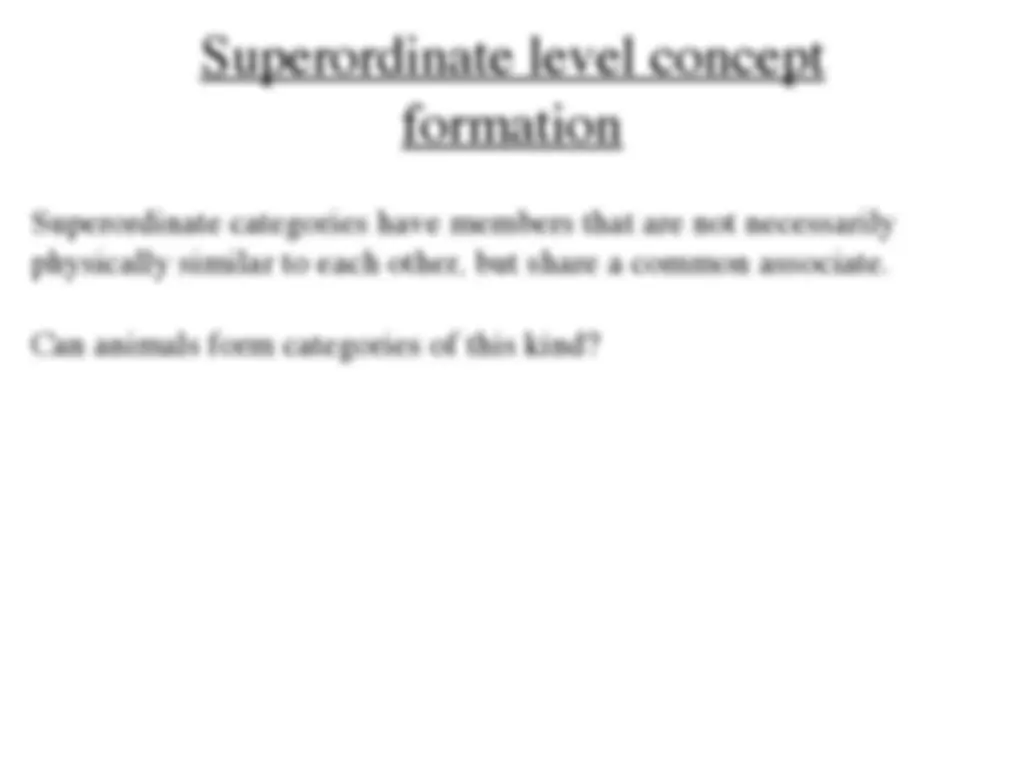
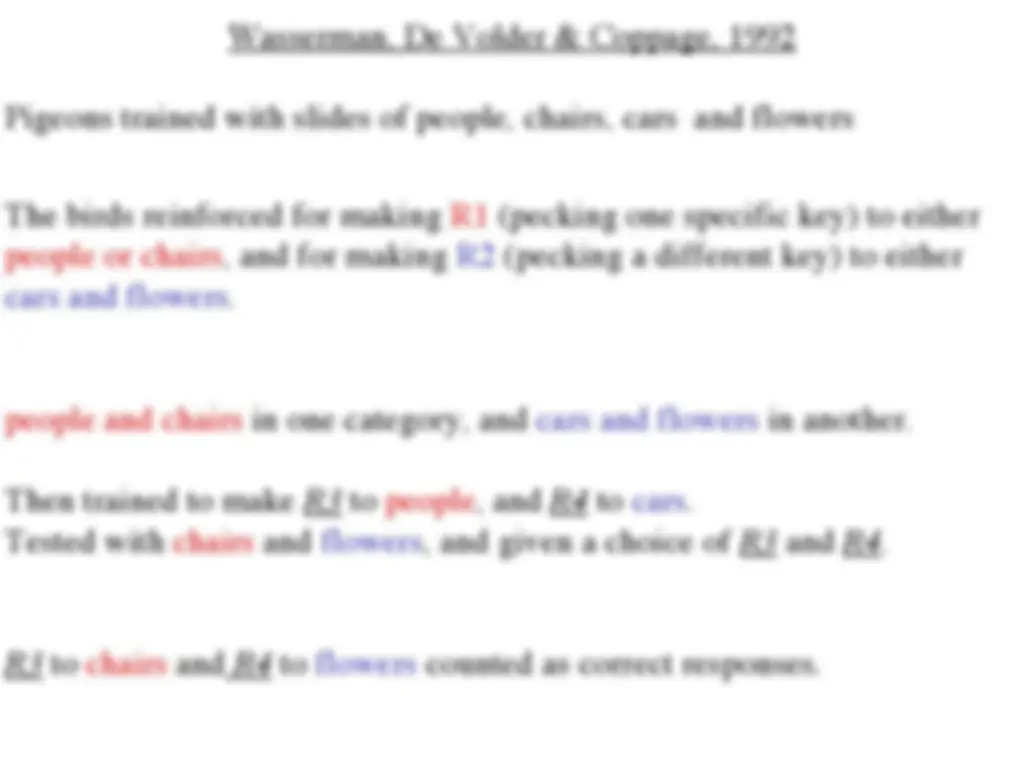
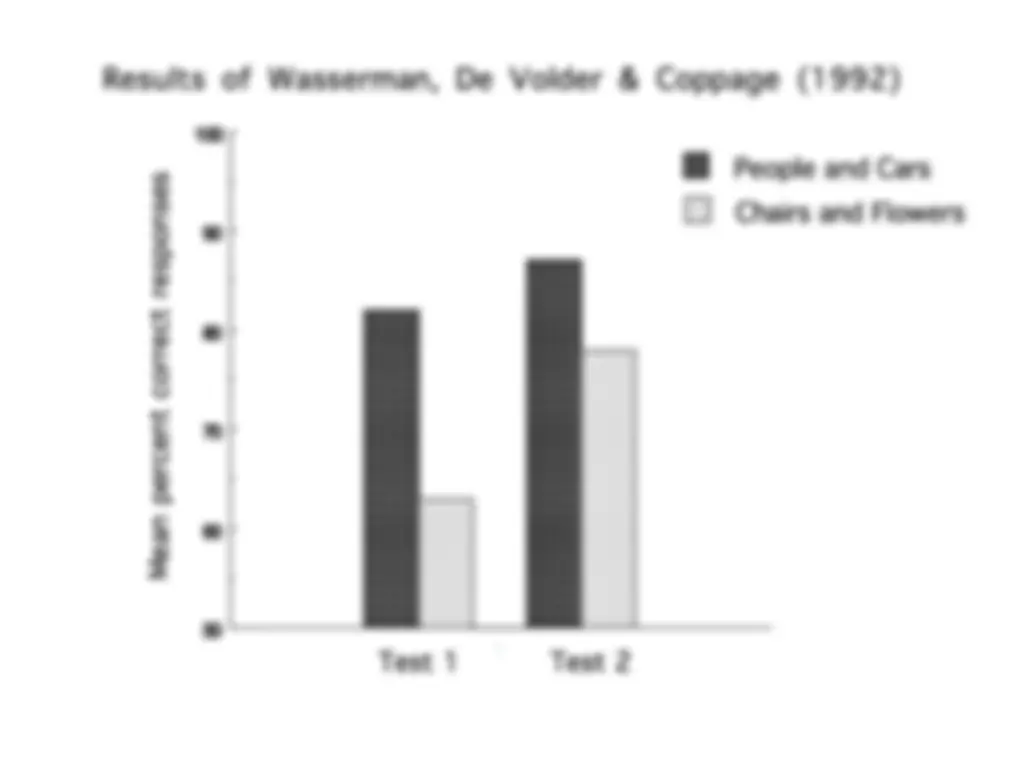
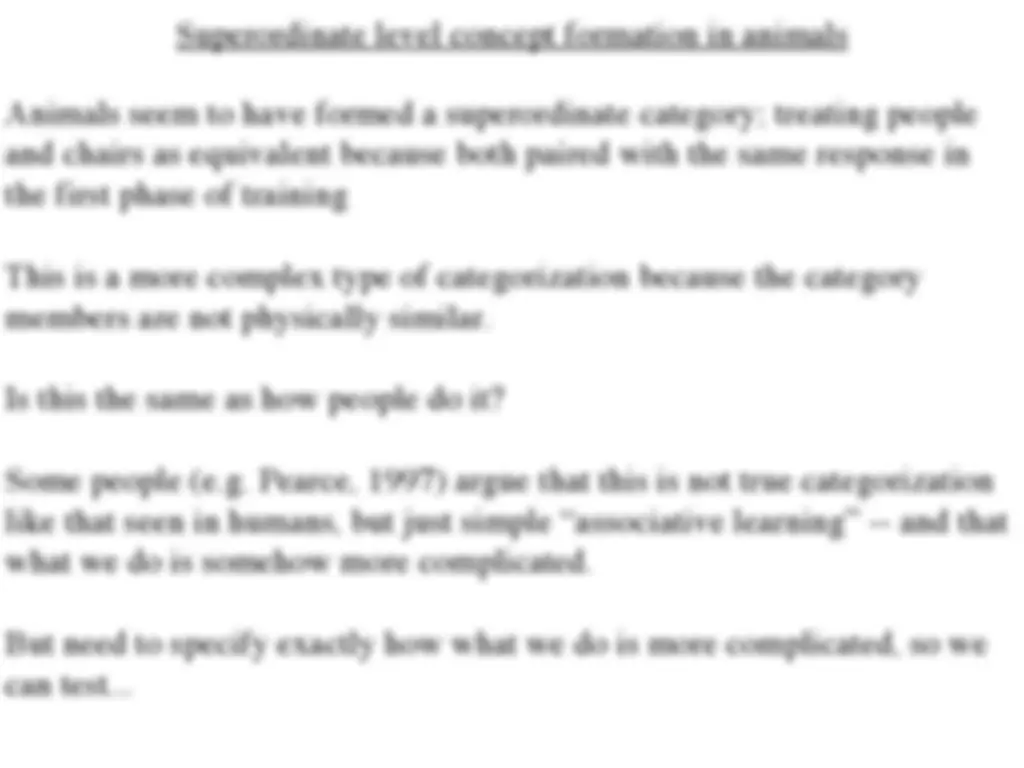
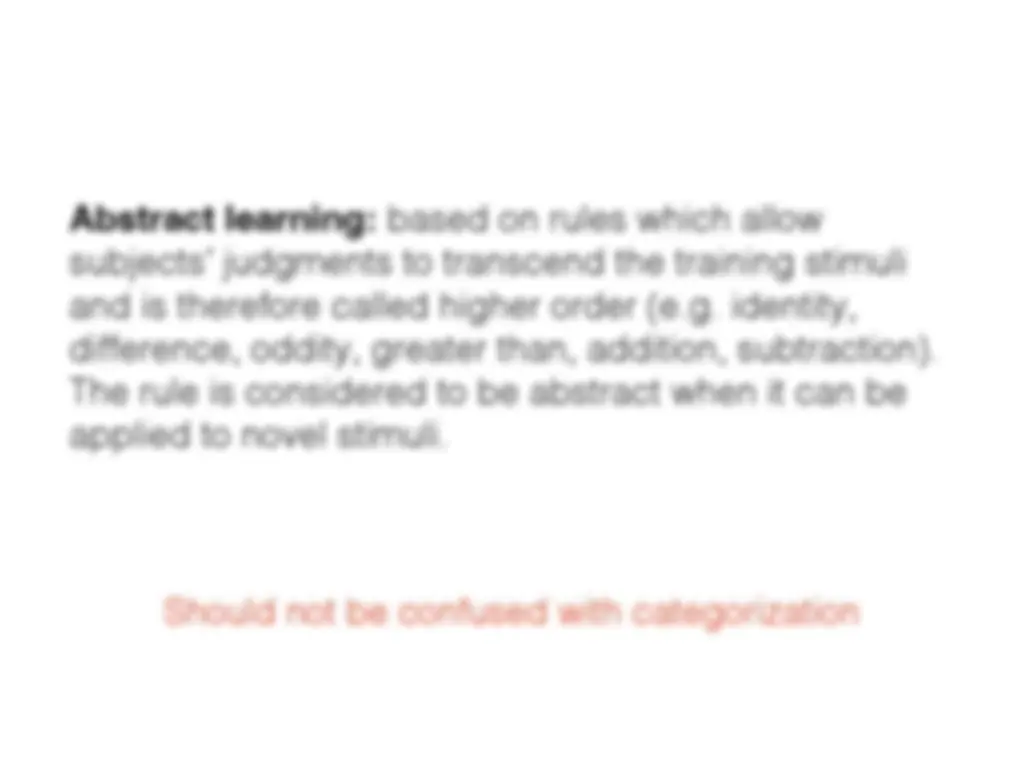
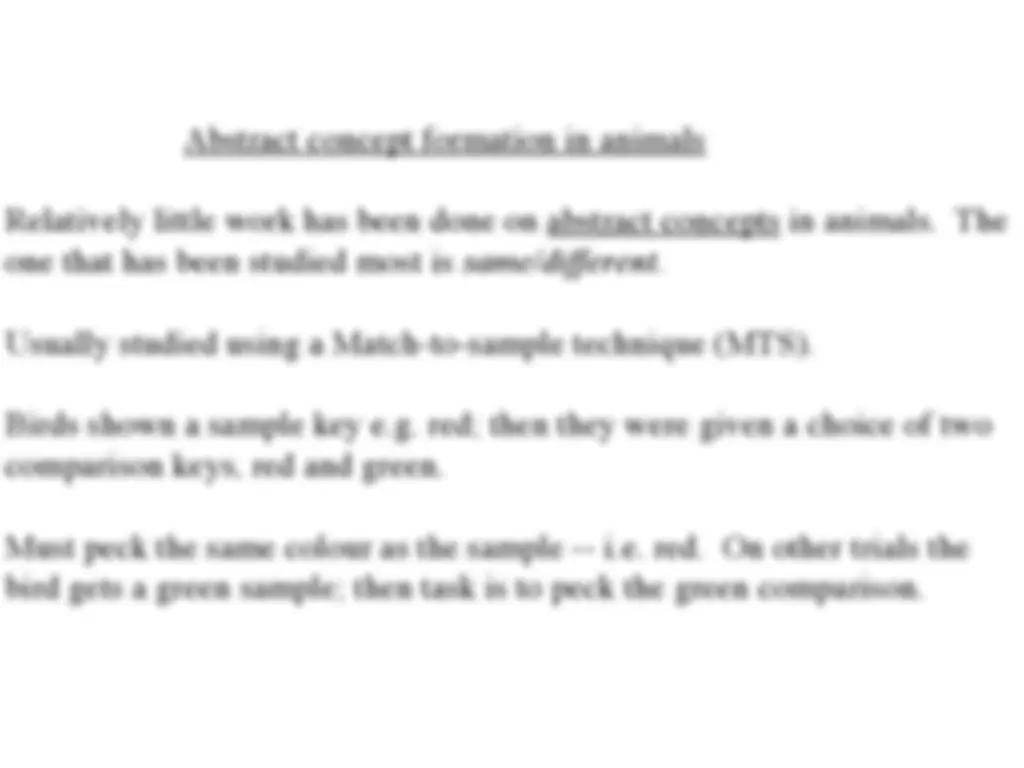
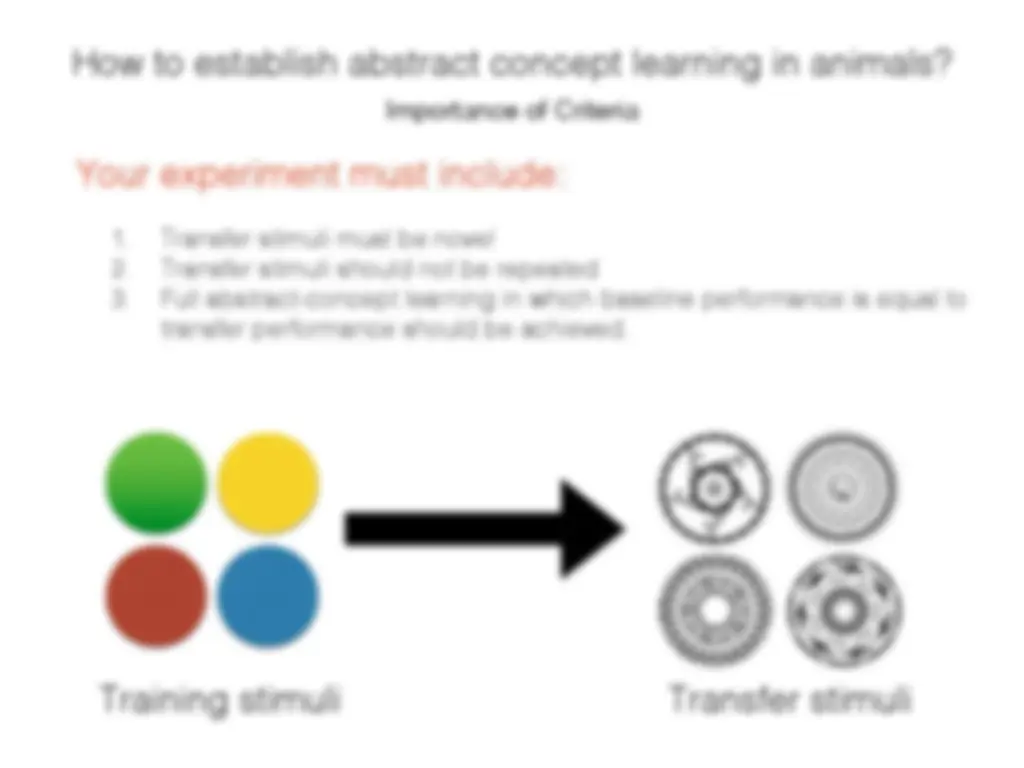
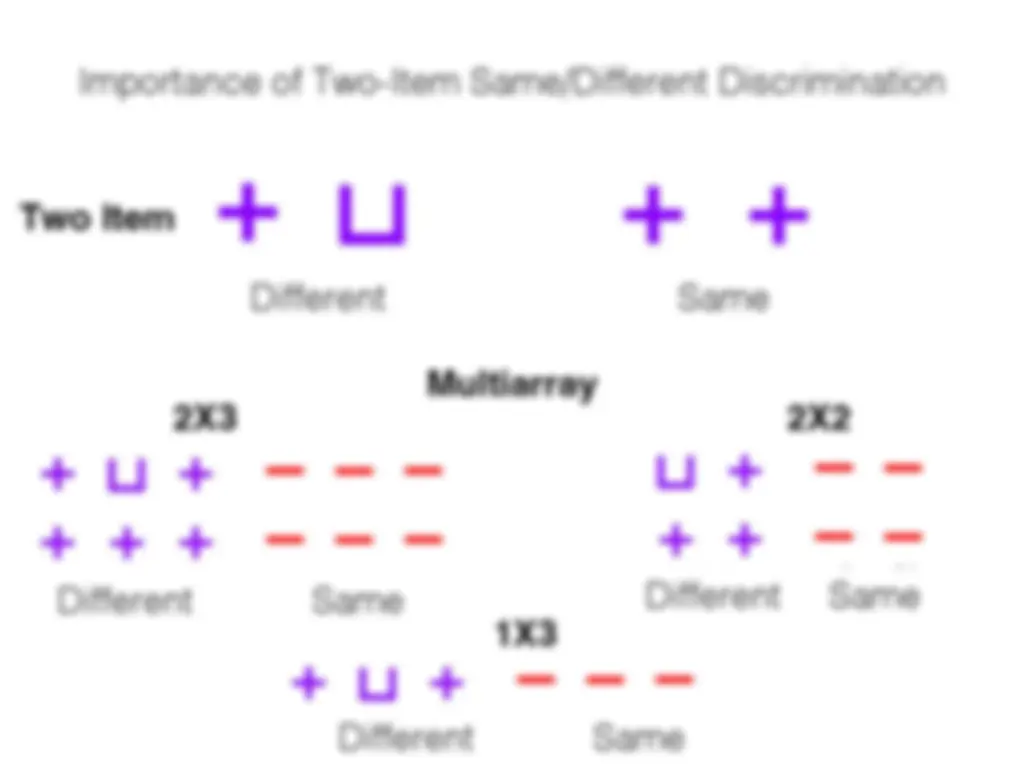
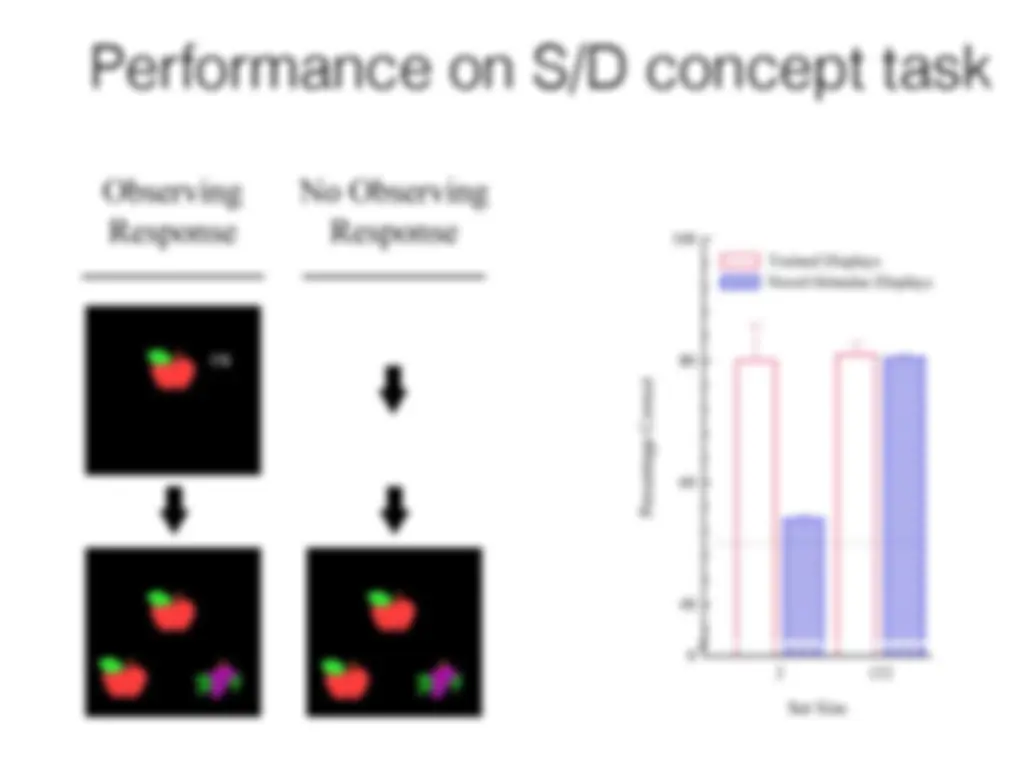
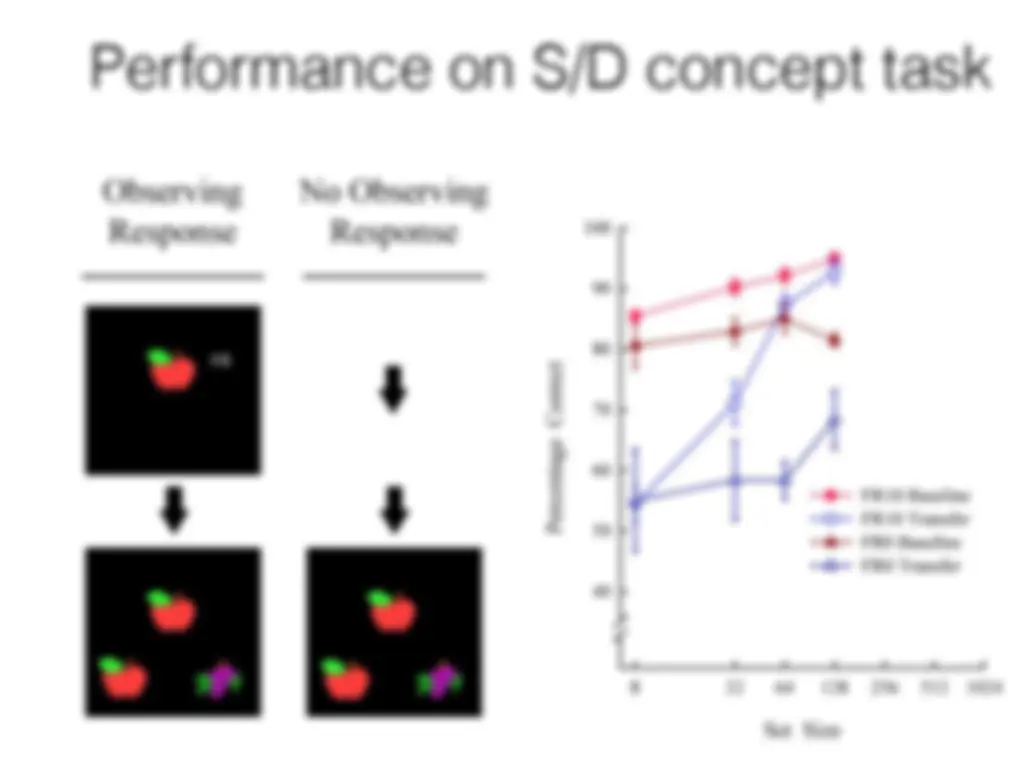
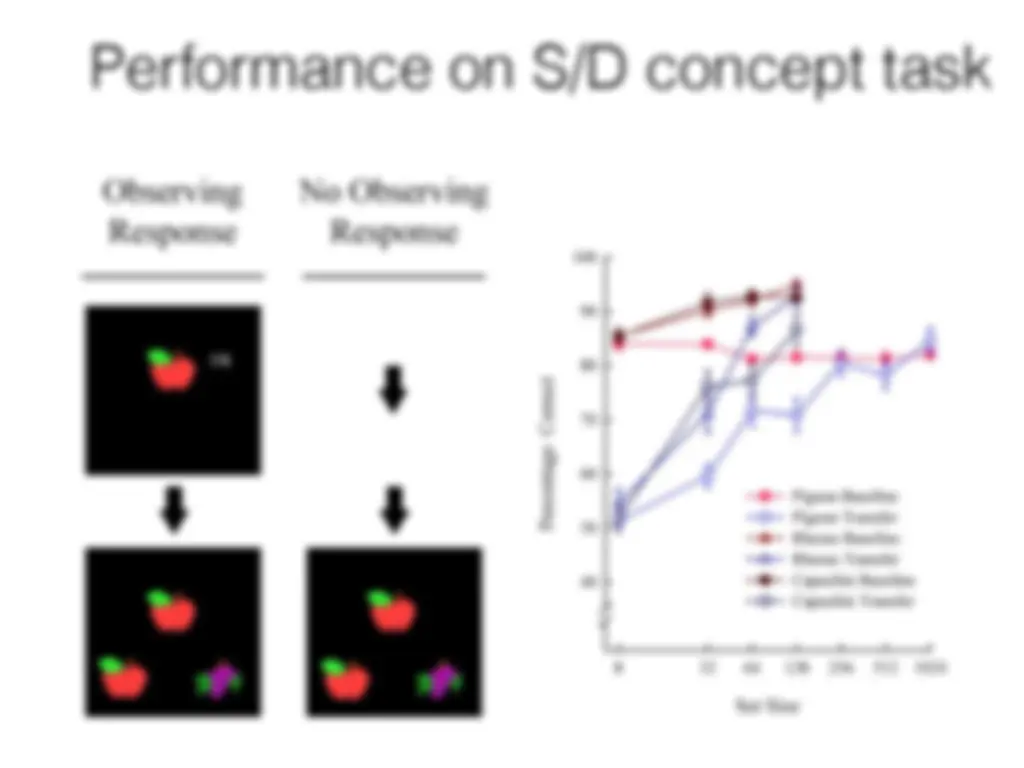
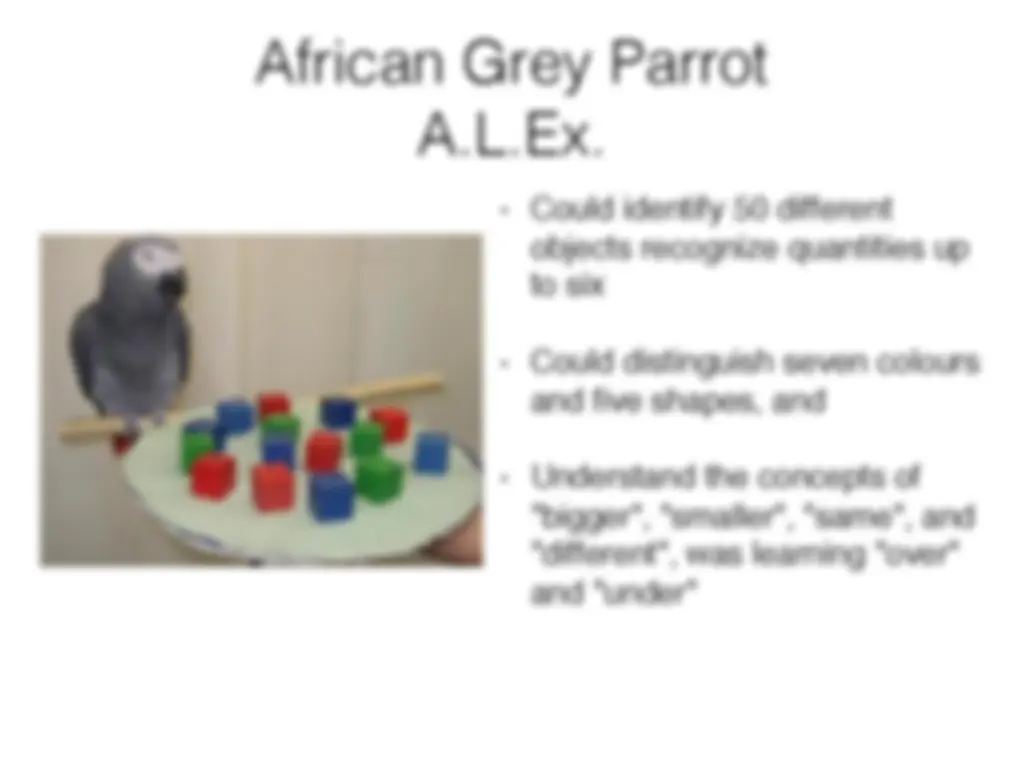
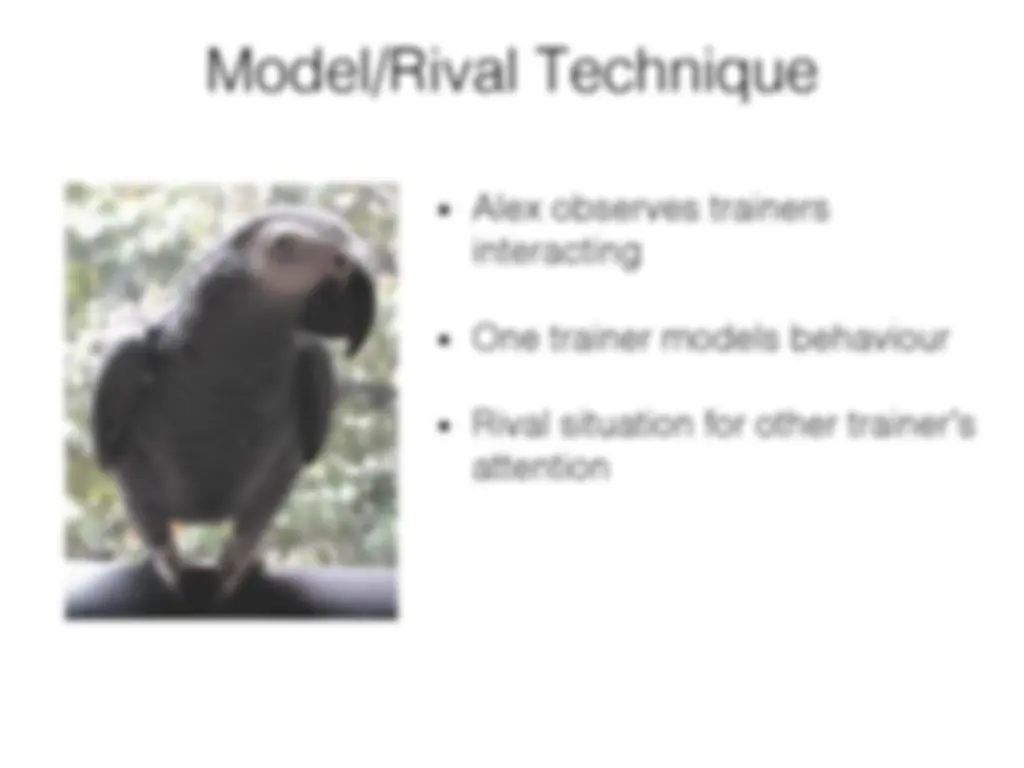

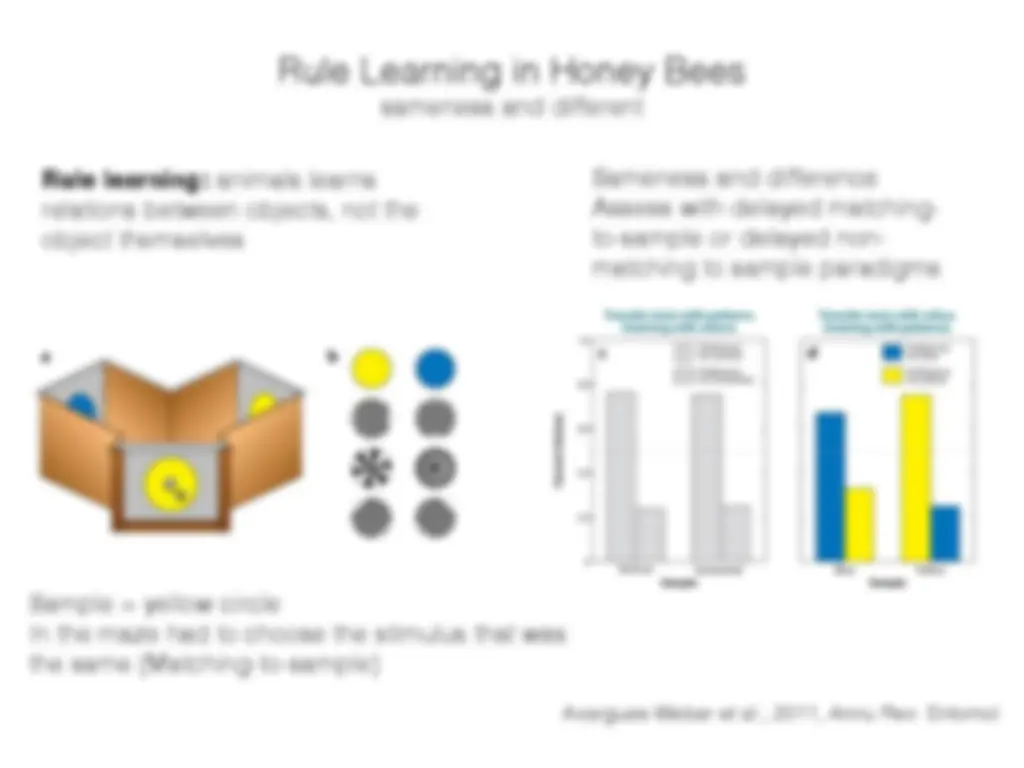
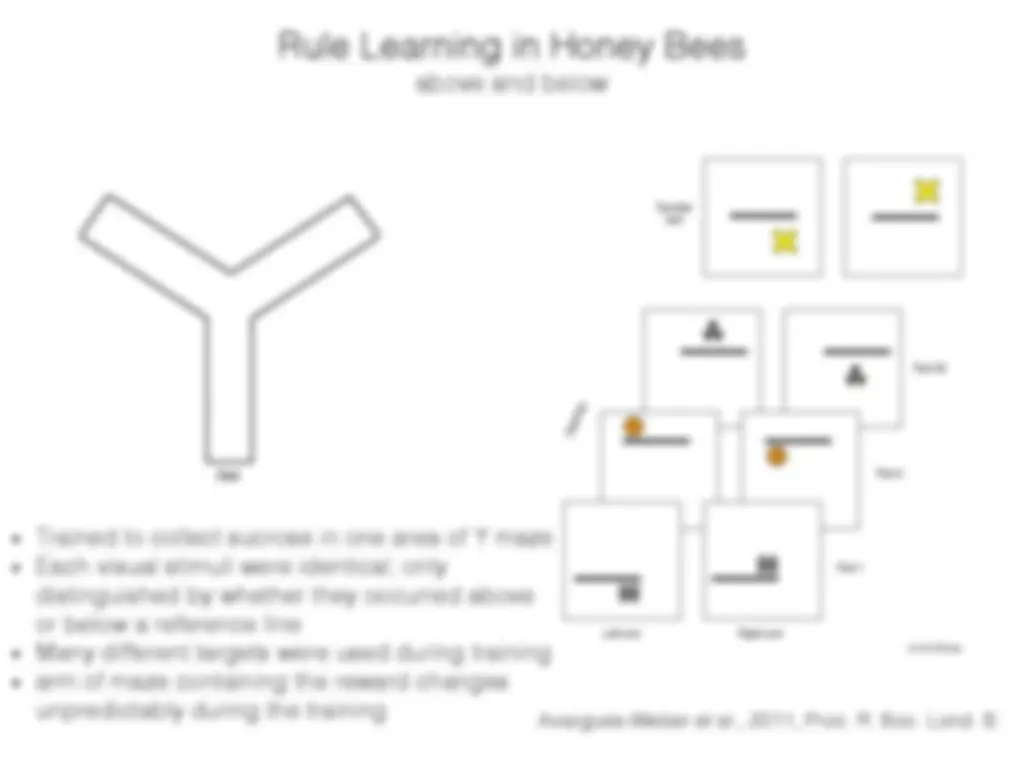
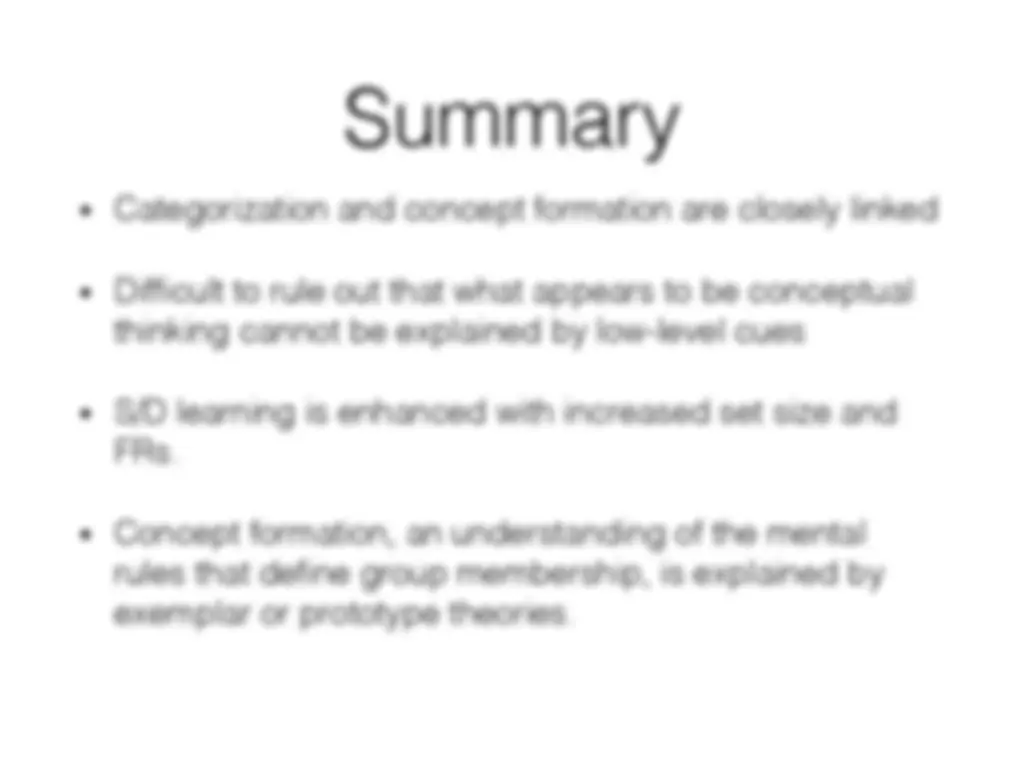


Study with the several resources on Docsity

Earn points by helping other students or get them with a premium plan


Prepare for your exams
Study with the several resources on Docsity

Earn points to download
Earn points by helping other students or get them with a premium plan
Community
Ask the community for help and clear up your study doubts
Discover the best universities in your country according to Docsity users
Free resources
Download our free guides on studying techniques, anxiety management strategies, and thesis advice from Docsity tutors
This lecture explores the fascinating question of whether animals are capable of abstract thinking. It delves into different types of concepts, including subordinate, basic level, and superordinate concepts, and examines how animals learn and categorize information. The lecture also discusses theories of concept formation, such as exemplar theory and prototype theory, and presents evidence for the prototype effect in pigeons. Finally, it explores the concept of abstract learning in animals, focusing on same/different discrimination tasks and rule learning in honeybees.
Typology: Slides
1 / 47

This page cannot be seen from the preview
Don't miss anything!








































Lecture 8 : Concept Formation
Concept Formation/Category Learning
Number of Responses Number of Sessions
Discrimination
Pigeons' discrimination of paintings by Monet and Picasso Claude Monet Pablo Picasso right-left inversion Upside-down (Watanabe et al., 1995) right-left inversion Upside-down
Impressionist vs Cubist Édouard Manet Georges Braque
Theories of basic level concept formation -- how do they do it?: (i) Exemplar theory : is a proposal concerning the way humans categorize objects and ideas in psychology. It argues that individuals make category judgments by comparing new stimuli with instances already stored in memory. The instance stored in memory is the “ exemplar ”. (ii) Prototype theory : Abstract a prototype that corresponds to the central tendency of training exemplars. Classify novel exemplars on basis of similarity to prototype. Robin Penguins Features of a bird?
Exemplar theory: Animals are storing information about training exemplars — which is why they will be more accurate with them than with novel test stimuli. This implies their performance can be explained by exemplar theory However, it is reported that humans show the prototype effect (e.g., Homa et al., 1981) -- they categorize the prototype more accurately than the training stimuli, even if it has never been seen before This is more consistent with prototype theory ... and doesn’t seem to fit exemplar theory Theories of basic level concept formation -- how do they do it?:
So do animals store exemplars and humans a prototype? Are humans and animals forming basic-level concepts in different ways? Theories of basic level concept formation -- how do they do it?: